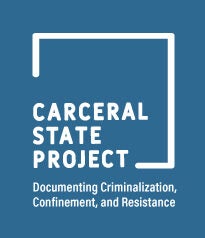Kinross Uprising, Michigan 2016: The Silenced Revolt over Basic Human Rights in Prison
A student team with the DCC’s “Confronting Conditions of Confinement” research initiative has published a multimedia investigative report that documents the origins, events, and implications of the 2016 uprising of incarcerated persons at a maximum security prison known as Kinross in Kinchloe, Michigan, in the Upper Peninsula.
The team conducted detailed and immersive research, says faculty leader Heather Thompson: “The researchers went to the UP, took GoPro video of the trip to orient viewers of their StoryMap to what it feels like for families of incarcerated persons to have a loved one locked up so far away.” What’s more, says Thompson, the students “talked to the townspeople where the prison sits and took photos of its environs. They spoke with lawyers, guards, union officials, politicians; [they] combed newspapers, legal records, and more to flesh out this story.”
This report is another example of how the Carceral State Project brings the research work of students in courses connected to Documenting Criminalization and Confinement together with activists and advocates in the community, family members of impacted people, and formerly incarcerated people, in order to recover and make legible to the public myriad otherwise wholly obfuscated yet critically important stories of what goes on day in and day out behind the walls of America’s carceral institutions. More important, by shining light on these histories, these teams and their community partners make clear what really goes on in these horrific institutions, how the men and women who live in these places each day both survive and resist the conditions of their confinement, and refuse to let these carceral structures or policies strip them of their humanity.


